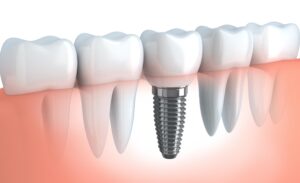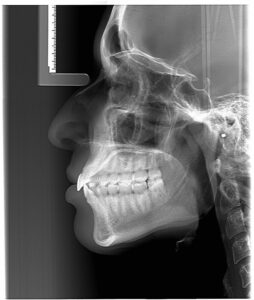Header logo
header top contact widget
Learn More Blog
Avoid Dental Implant Failure
Posted on Apr 04, 2024 by William J. Claiborne, DDS MS
There are reasons to go to an expert for certain things. For example, I’d never try to do electrical work around my house on my own; I’d call an electrician.
When it comes to dental implants, there are also reasons to seek out an “expert.” In this article, I’ll explain why it’s best to have your dental implants selected and placed by a periodontist.
First, let’s look at the structure of an implant. Serving as a replacement for a missing tooth, the implanted portion is a titanium screw that is positioned into the jawbone. Over the course of 3-6 months, the jawbone grows around the implant, securing it in place. It can now support an artificial tooth or crown.
Dental implants have many benefits when it comes to restoring biting/chewing/speaking function and smiling appearance, including:
- enhancing the appearance of a smile
- improving biting and chewing function
- stabilizing surrounding teeth and jaw tissue
- halting the process of bone loss, known as resorption
- an increased quality of life for many people
Dental implants have an excellent success rate – 90-95%. However, there are instances where a dental implant can fail.
Dental implant complications can occur from infections, gum recession, and nerve and tissue damage. There is also a higher risk of implant failure for individuals who smoke or have diabetes, gum disease, have radiation therapy to the jaw area or take certain medications.
A periodontal specialist has advanced training and skills in the diagnosis and placement of all types of dental implants. This means that this dental specialist can determine which implant system will work best for your individual needs. For example, a person who has lost a great deal of bone mass may only be a candidate of certain implant types or may need a sinus lift prior to placement. A periodontist can make these determinations so your potential for implant success is higher.
One of the most common causes for implants failure is due to an infection at the implant site. Because a periodontist specializes in the care of gum tissues in the mouth, he or she can take measures to treat the infection at early stage to resolve the problem. However, in some cases, treating the infection may require implant removal in order to reach the infected bone tissue.
Using advanced skills, a periodontist can also assess your gum health prior to implant placement. He or she can pretreat any periodontal diseases so the implant has a healthy foundation. When the gum tissues around the implant are inflamed or have receded, the implant is at risk for entry of bacteria into the area where it is implanted.
After the implant is placed, it should fuse with the bone. A complication that prevents this may require the dental surgeon may remove it. Fortunately, after the implanted area is restored to a healthy state, the implant procedure can be redone.
Another benefit in using a periodontal specialist for implant placement is in their in-depth understanding of the nerves and tissues surrounding the jaw bones. There is a risk for failure when a dental implant is placed too close to a nerve. For example, there is a nerve that runs horizontally through the lower jaw. If the implant is placed in close proximity, it can cause numbness, tingling, or pain.
Nerve or tissue damages can result in:
-
- numbness on the side of the implant, including the lower lip and chin
- persistent pain or discomfort
- tingling, tickling, or burning sensations in the gums and skin
While precision placement (depth, position and angle) is a bonus of a periodontist’s skills for implant patients, our Asheville periodontal dental patients have the benefits of advanced technology. Our Computerized Dental Implant Placement system is designed for pre-surgical positioning of dental implants that uses a 3D model of the patient’s jaw.
Once the implant type is selected, a template is developed for optimal treatment success, even for complex cases. This minimizes disruption of gum tissues and targets implant placement at ideal depths and angles. Thus, treatment success rates are higher with faster (and more comfortable) healing time.
An example of this precision placement guidance in with upper dental implants. With declined bone mass of the upper jaw (typically from years of missing tooth roots), the sinus cavities can hover too close to the position(s) where implants are to be placed. In these cases, we can perform a sinus lift.
Should the dental implant protrude into the sinus cavity, the sinuses can become inflamed, causing:
- pain, tenderness, or swelling around the cheeks, eyes or forehead
- nasal blockage, often with green or yellow mucus
- a reduced sense of smell
- headaches
- toothache
- persistent bad breath
Of course, like a natural tooth, excessive force or impact can cause a dental implant to crack or become loose. For example, for people who grind or forcefully clench their teeth (“bruxing”) during sleep may need to wear a bite guard to prevent damage to the implant as well as their natural teeth.
In some instances, it can take up to 5 years for implant-related problems or infections to become apparent to the patient. Any issues that arise around the site of the dental implant should be examined and addressed without delay.
We want your dental implant(s) to last your lifetime and bring you as much eating and laughing pleasure as they are known to give. The best way to ensure the success of a dental implant is to follow the aftercare advice your periodontist and dentist provide.
As with a person’s natural teeth, an implant and the tissues surrounding it require regular cleaning. Daily flossing in the area at least once per day is needed after the gums have healed. Some patients prefer interdental brushes to access areas that are more difficult to reach.
 Regular dental check-ups and appointments for cleanings should occur at least twice a year to ensure the longterm success of your implants. Once a quarter may be advised for some individuals who have higher risks for plaque development.
Regular dental check-ups and appointments for cleanings should occur at least twice a year to ensure the longterm success of your implants. Once a quarter may be advised for some individuals who have higher risks for plaque development.
Optimal comfort for our Western Carolina patients has always been a priority. For many, a desired level of comfort and relaxation includes sedation options. Here, we offer several sedation options, including oral and IV sedation (“twilight sleep”). These are administered safely by an anesthesiologist who uses advanced safety equipment throughout your treatment.
If you are considering dental implants, you may wish to begin with a consultation appointment. During this time, we can explain the vast difference in comfort, treatment time, and success available through our specialized skills and extensive technology.
Call 828-274-9440 to schedule. New patients are always welcome.
Recent Posts
Categories
Archives
- September 2024
- August 2024
- July 2024
- June 2024
- May 2024
- April 2024
- March 2024
- February 2024
- January 2024
- December 2023
- November 2023
- October 2023
- September 2023
- August 2023
- July 2023
- June 2023
- May 2023
- April 2023
- March 2023
- February 2023
- January 2023
- December 2022
- November 2022
- October 2022
- September 2022
- August 2022
- July 2022
- June 2022
- May 2022
- April 2022
- March 2022
- February 2022
- January 2022
- December 2021
- November 2021
- October 2021
- September 2021
- August 2021
- July 2021
- June 2021
- May 2021
- April 2021
- March 2021
- February 2021
- January 2021
- December 2020
- November 2020
- October 2020
- September 2020
- August 2020
- July 2020
- June 2020
- May 2020
- April 2020
- March 2020
- February 2020
- January 2020
- December 2019
- November 2019
- October 2019
- September 2019
- August 2019
- July 2019
- June 2019
- May 2019
- April 2019
- March 2019
- February 2019
- January 2019
- December 2018
- November 2018
- October 2018
- September 2018
- August 2018
- July 2018
- June 2018
- May 2018
- April 2018
- March 2018
- February 2018
- January 2018
- December 2017
- November 2017
- October 2017
- September 2017
- August 2017
- July 2017
- June 2017
- May 2017
- April 2017
- March 2017
- February 2017
- January 2017
- December 2016
- November 2016
- October 2016
- September 2016
- August 2016
- July 2016
- June 2016
- May 2016
- April 2016
- March 2016
- February 2016
- January 2016
- December 2015
- November 2015
- October 2015
- September 2015
- August 2015
- July 2015
- June 2015
- May 2015
- April 2015
- March 2015
- February 2015
- January 2015
- December 2014
- November 2014
- October 2014
- September 2014
- August 2014
- July 2014
- June 2014
- May 2014
- April 2014
- March 2014
- February 2014
- January 2014
- December 2013
- November 2013
- October 2013
- September 2013
- August 2013
- July 2013
- June 2013
- May 2013
- April 2013
- March 2013
- February 2013
- January 2013
- December 2012
- November 2012
- October 2012
- September 2012
- August 2012
- July 2012
- June 2012

